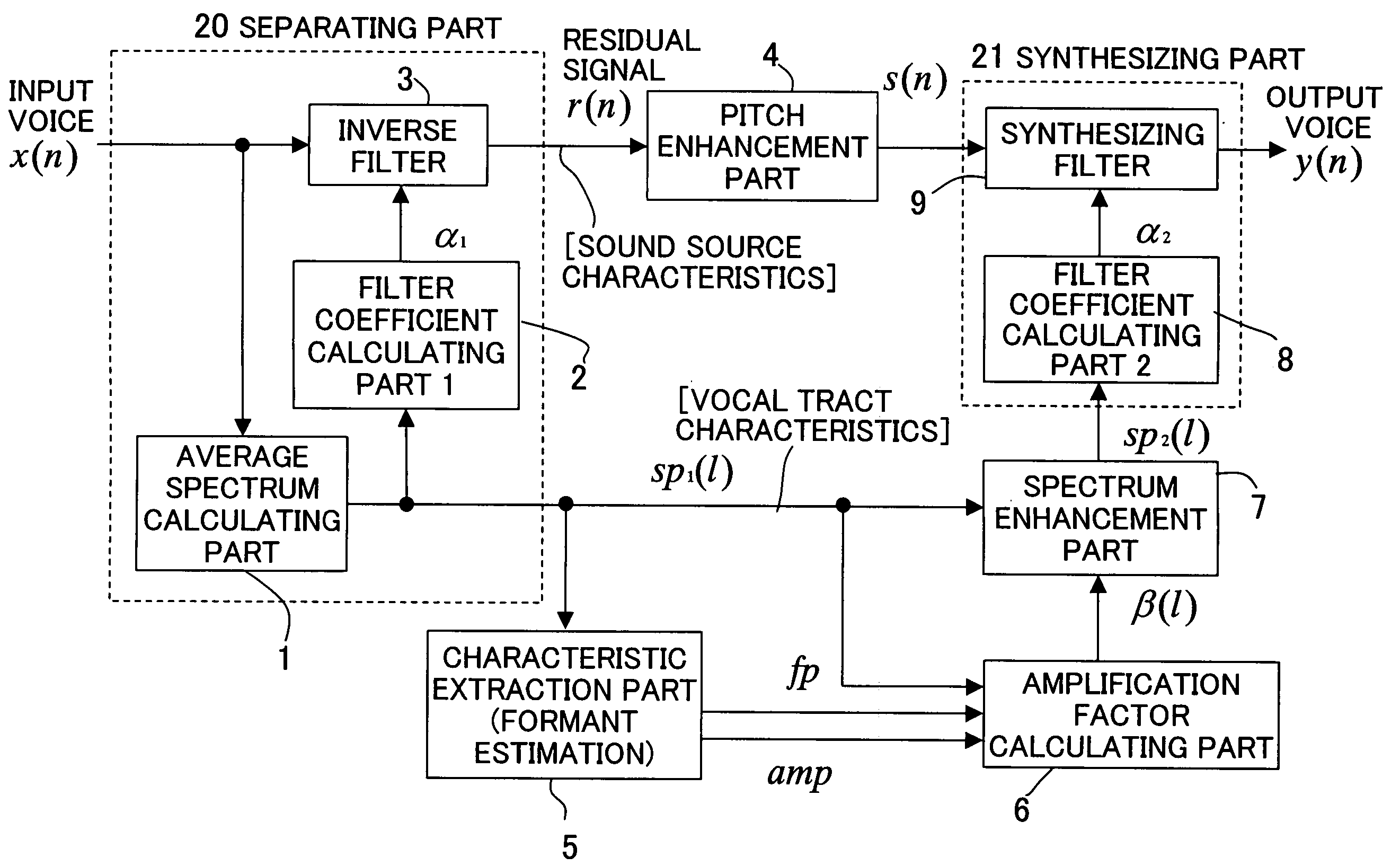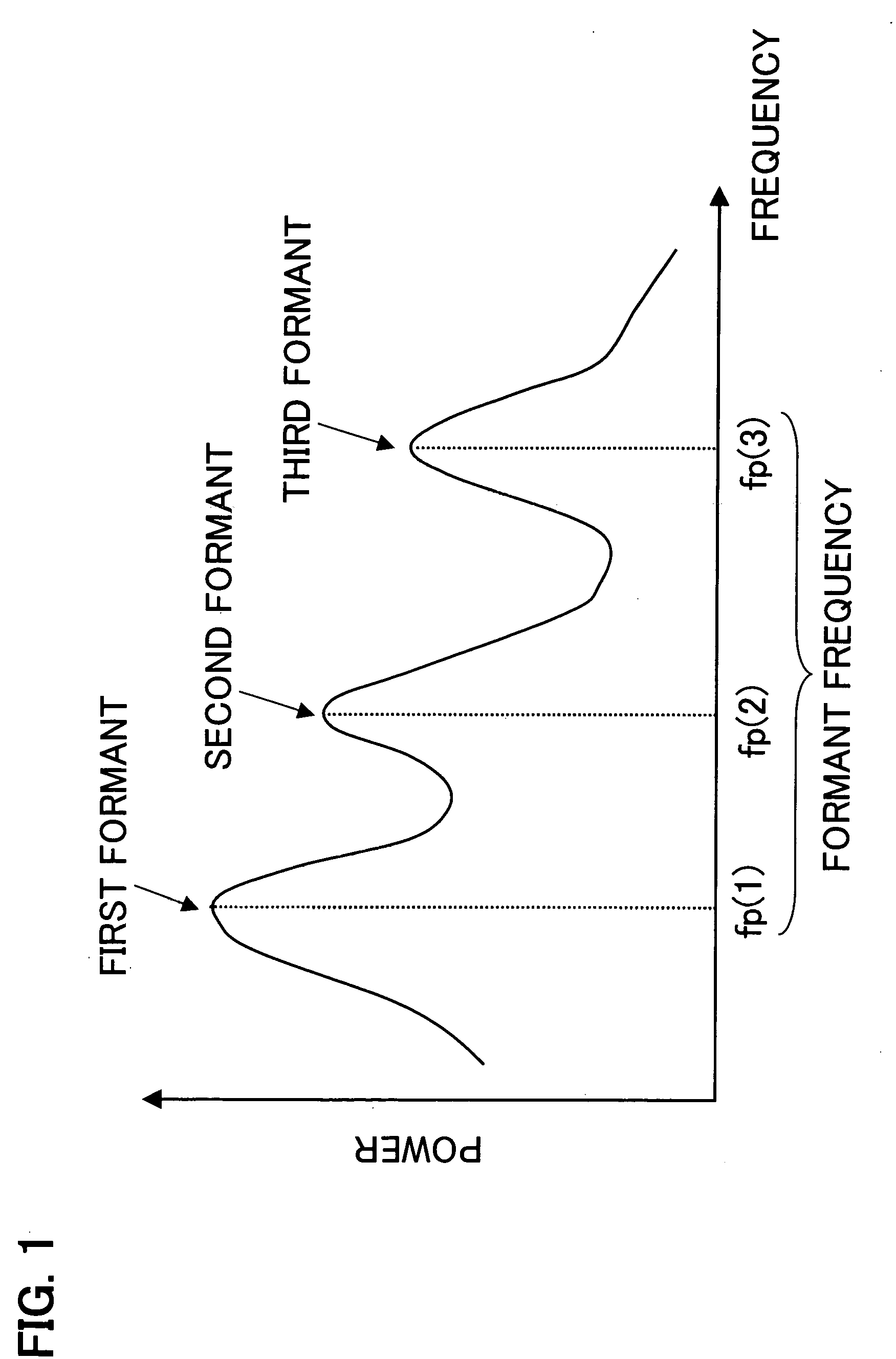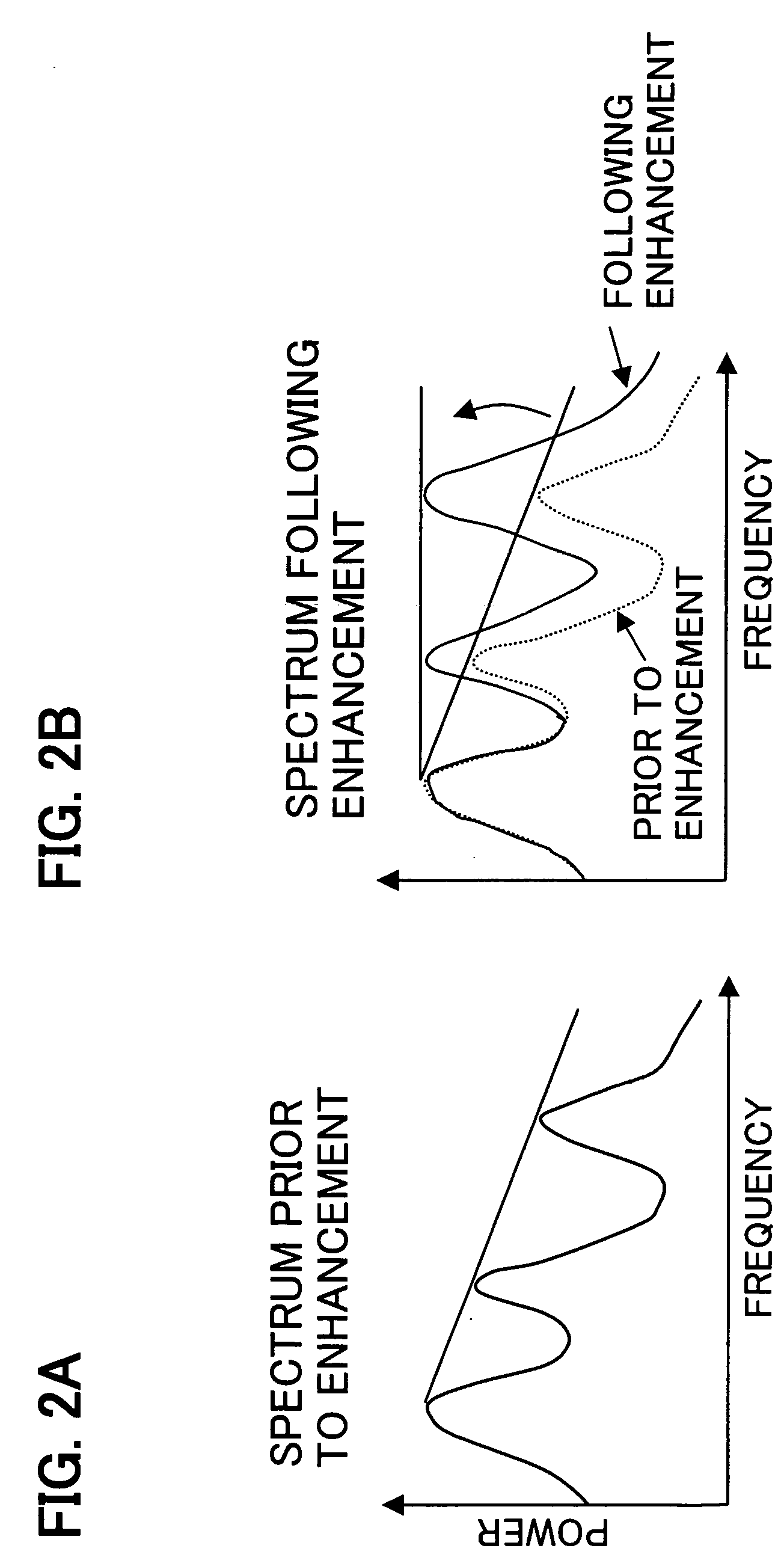Voice enhancement device
- Summary
- Abstract
- Description
- Claims
- Application Information
AI Technical Summary
Benefits of technology
Problems solved by technology
Method used
Image
Examples
first embodiment
[0067]FIG. 10 is a block diagram of the construction of a first embodiment according to the present invention.
[0068] In this figure, the pitch enhancement part 4 is omitted (compared to the principle diagram shown in FIG. 9).
[0069] Furthermore, in regard to the embodied construction of the separating part 20, the average spectrum calculating part 1 inside the separating part 29 is split between the front and back of the filter coefficient calculating part 2; in the pre-stage of the filter coefficient calculating part 2, the input voice signal x(n), (0≦n10; here, the self-correlation function ac (m) (i), (0≦i≦p1) of the current frame is determined by part of Equation (1). Here, N is the frame length. Furthermore, m is the frame number of the current frame, and 1 is the order number of the inverse filter described later. ac(m)(i)=∑n=iN-1x(n)·x(n-i),(0≤i≤p1)(1)
[0070] Furthermore, in the separating part 20, the self-correlation function ac(m−j) (i), (1≦j≦L, 0≦i≦p1) in the immediate...
second embodiment
[0098] Accordingly, in this second embodiment, the input voice of the current frame is subjected to an LPC analysis by part of an LPC analysis part 13, and the LPC coefficients α1(i), (1≦i≦p1) that are thus obtained are used as the coefficients of the inverse filter 3.
[0099] The spectrum sp1(l) is determined from the LPC coefficients α1(i) by the second spectrum calculating part 1-2B. The method used to calculate the spectrum sp1(l) is the same as that of Equation (4) in the first embodiment.
[0100] Next, the average spectrum is determined by the first spectrum calculating part, and the formant frequencies fp(k) and formant amplitudes amp(k) are determined in the formant estimating part 5 from this average spectrum.
[0101] Next, as in the previous embodiment, the amplification rate β(l) is determined by the amplification rate calculating part 6 from the spectrum sp1(l), formant frequencies fp(k) and formant amplitudes amp(k), and spectrum emphasis is performed by the spectrum emphas...
fourth embodiment
[0110]FIG. 16 shows a block diagram of the present invention. This embodiment differs from the first embodiment in that pitch emphasis processing is applied to the residual difference signal r(n) constituting the output of the reverse filter 3 in accordance with the principle diagram shown in FIG. 9; in all other respects, this construction is the same as the first embodiment.
[0111] The method of pitch emphasis performed by the pitch emphasizing filter 4 is arbitrary; for example, a pitch coefficient calculating part 4-1 can be installed, and the following method can be used.
[0112] First, the self-correlation rscor(i) of the residual difference signal of the current frame is determined by Equation (17), and the pitch lag T at which the self-correlation rscor(i) shows a maximum value is determined. Here, Lagmin and Lagmax are respectively the lower limit and upper limit of the pitch lag. rscor(i)=∑n=iN-1r(n)·r(n-i),(Lagmin≤i≤Lagmax)(17)
[0113] Next, pitch prediction coefficients...
PUM
 Login to View More
Login to View More Abstract
Description
Claims
Application Information
 Login to View More
Login to View More - R&D
- Intellectual Property
- Life Sciences
- Materials
- Tech Scout
- Unparalleled Data Quality
- Higher Quality Content
- 60% Fewer Hallucinations
Browse by: Latest US Patents, China's latest patents, Technical Efficacy Thesaurus, Application Domain, Technology Topic, Popular Technical Reports.
© 2025 PatSnap. All rights reserved.Legal|Privacy policy|Modern Slavery Act Transparency Statement|Sitemap|About US| Contact US: help@patsnap.com



